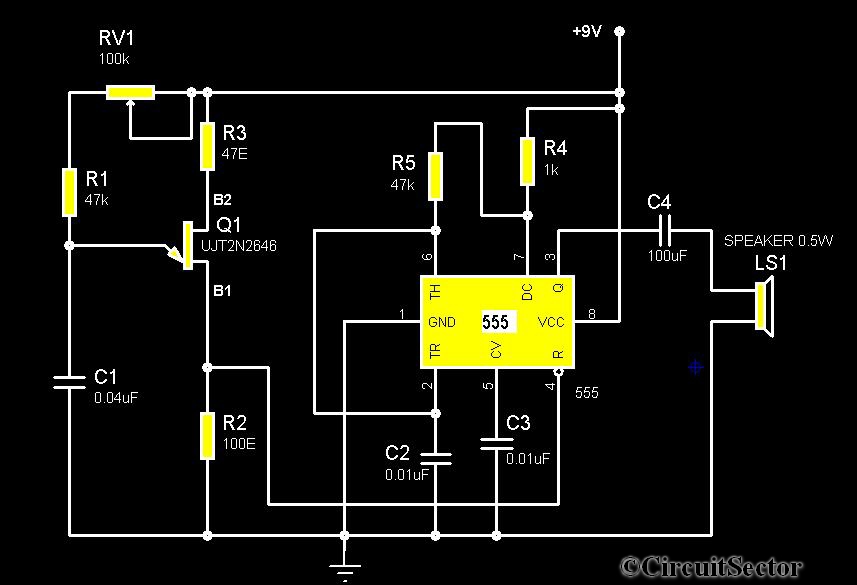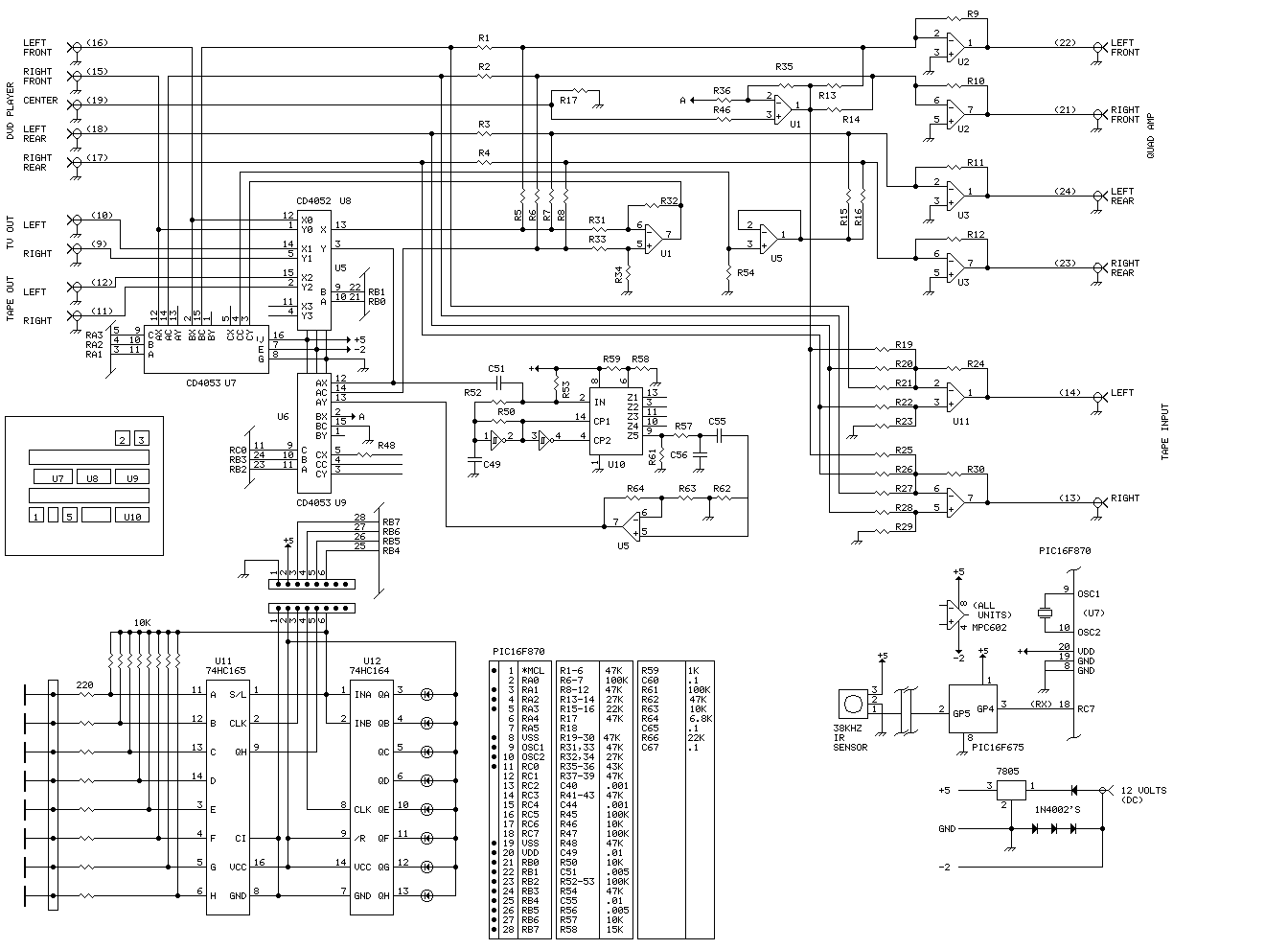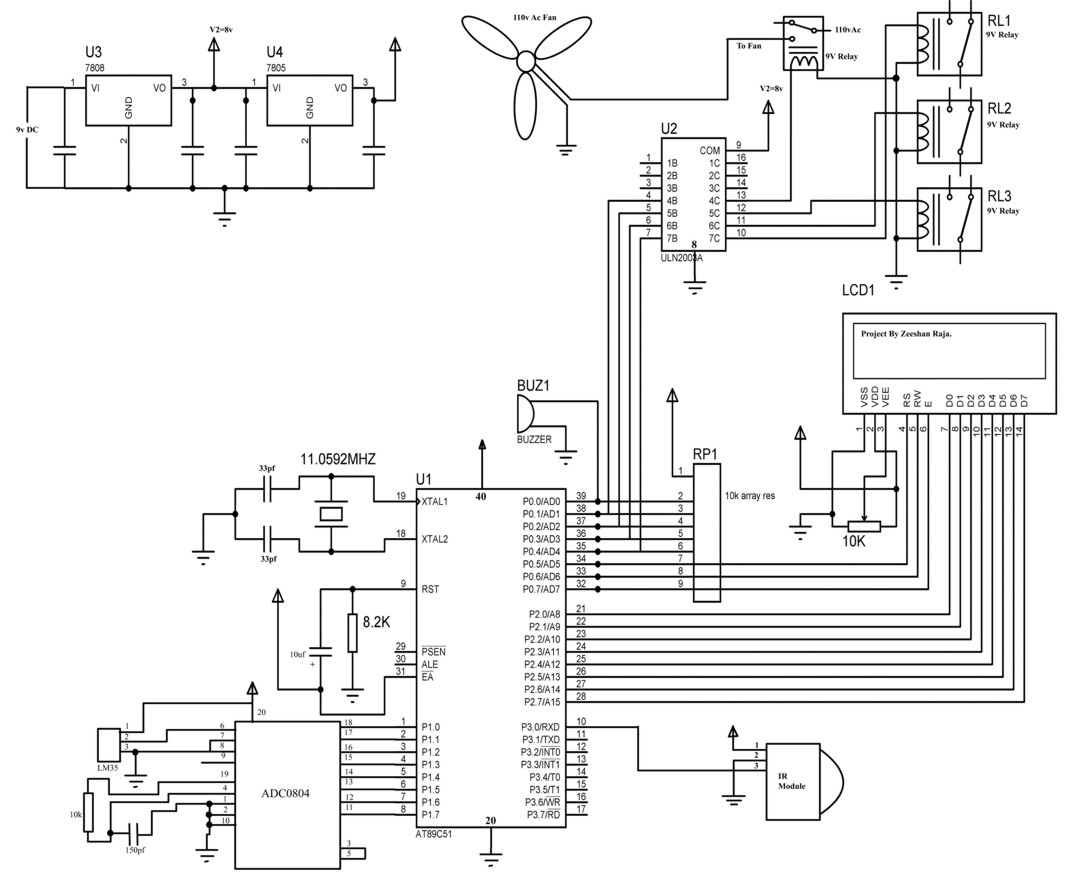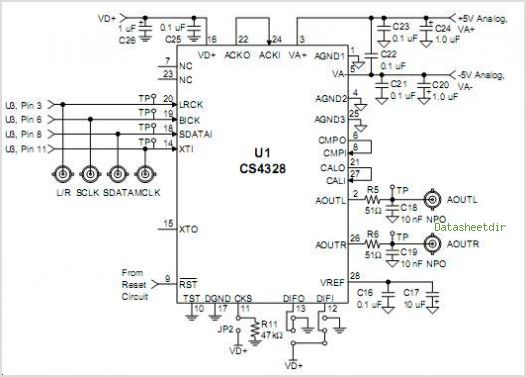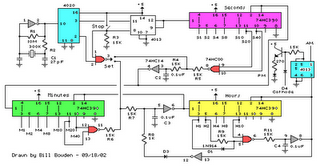
digital alarm clock using pic
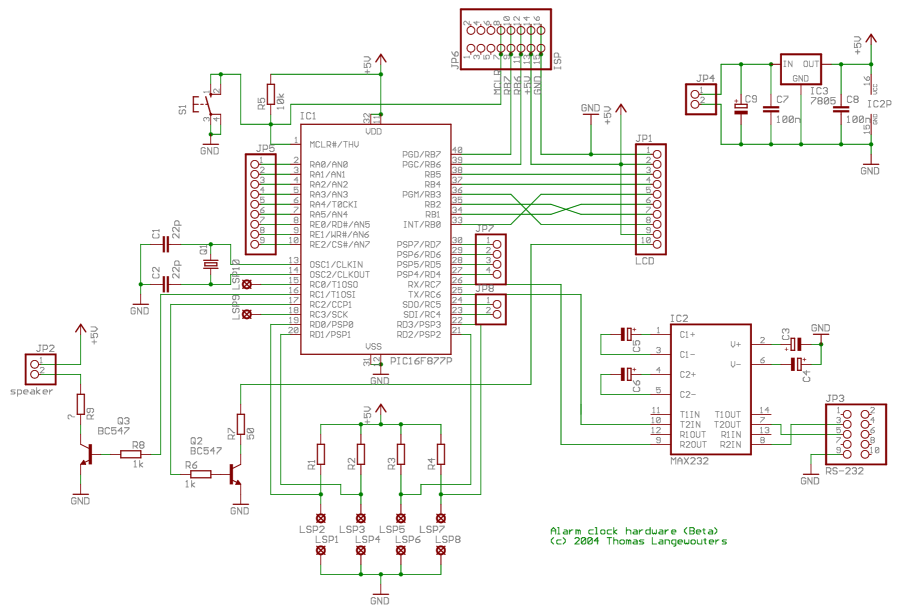
This project outlines a digital clock featuring an alarm function, utilizing a PIC16F877 microcontroller to achieve an accurate 1-second delay with Timer0 through Roman's zero error method. The time is displayed in large font on a 4G—20 character LCD, which employs the HD44780 display driver. Time synchronization with a computer is facilitated via a serial port. Power is supplied through a 9V wall adapter, which is used to obtain a regulated +5V power supply using an LM7805 IC. The microcontroller operates with a 20 MHz external clock. The LCD's backlight is controlled by a PWM output from the microcontroller, allowing for variable backlight intensity. The complete software, written in JAL, is available for download.
This digital clock circuit is designed for precision and user-friendliness, integrating several components to achieve its functionality. The PIC16F877 microcontroller is at the heart of the design, programmed to manage timekeeping and alarm features effectively. The Timer0 module within the microcontroller is configured to generate a 1-second delay, critical for accurate timekeeping. Roman's zero error method enhances the timing precision, ensuring that the clock remains synchronized over prolonged periods.
The display utilizes a 4G—20 character LCD with an HD44780 driver, which is capable of rendering time in a large, readable font. This choice of display not only improves visibility but also enhances user interaction. A serial port connection allows users to synchronize the clock with their computer’s time, providing an additional layer of convenience and accuracy.
Power management is efficiently handled by a 9V wall adapter, which feeds into an LM7805 voltage regulator. This component converts the higher voltage down to a stable +5V supply necessary for the microcontroller and peripheral devices. The choice of a 20 MHz external clock ensures that the microcontroller operates at optimal speed, allowing for quick processing of timekeeping functions and user inputs.
The backlight of the LCD is driven by a PWM output from the microcontroller. This feature enables users to adjust the brightness of the display according to their preferences or ambient lighting conditions, enhancing usability in various environments.
Overall, this digital clock with alarm function represents a well-integrated electronic design, combining precise timing, user-friendly display, and adjustable features, making it suitable for a wide range of applications. The availability of the complete software in JAL further supports customization and adaptation for specific user needs or enhancements.This project describes a digital clock with alarm function. It uses a PIC16F877 microcontroller to generate an accurate 1 sec delay with Timer0 using Roman`s zero error method. The time is displayed in large size font on a 4G—20 character LCD that uses HD44780 display driver. You can synchronize the time with your computer time through a serial po rt. The required power is provided through a 9 V wall adapter which is used to obtain a regulated +5 V power supply using a LM7805 IC. The microcontroller runs with a 20 MHz external clock. The backlight of LCD is driven by a PWM output from the microcontroller so that the back light intensity can be varied.
The full software written in JAL is available to download. Source Code. 🔗 External reference
This digital clock circuit is designed for precision and user-friendliness, integrating several components to achieve its functionality. The PIC16F877 microcontroller is at the heart of the design, programmed to manage timekeeping and alarm features effectively. The Timer0 module within the microcontroller is configured to generate a 1-second delay, critical for accurate timekeeping. Roman's zero error method enhances the timing precision, ensuring that the clock remains synchronized over prolonged periods.
The display utilizes a 4G—20 character LCD with an HD44780 driver, which is capable of rendering time in a large, readable font. This choice of display not only improves visibility but also enhances user interaction. A serial port connection allows users to synchronize the clock with their computer’s time, providing an additional layer of convenience and accuracy.
Power management is efficiently handled by a 9V wall adapter, which feeds into an LM7805 voltage regulator. This component converts the higher voltage down to a stable +5V supply necessary for the microcontroller and peripheral devices. The choice of a 20 MHz external clock ensures that the microcontroller operates at optimal speed, allowing for quick processing of timekeeping functions and user inputs.
The backlight of the LCD is driven by a PWM output from the microcontroller. This feature enables users to adjust the brightness of the display according to their preferences or ambient lighting conditions, enhancing usability in various environments.
Overall, this digital clock with alarm function represents a well-integrated electronic design, combining precise timing, user-friendly display, and adjustable features, making it suitable for a wide range of applications. The availability of the complete software in JAL further supports customization and adaptation for specific user needs or enhancements.This project describes a digital clock with alarm function. It uses a PIC16F877 microcontroller to generate an accurate 1 sec delay with Timer0 using Roman`s zero error method. The time is displayed in large size font on a 4G—20 character LCD that uses HD44780 display driver. You can synchronize the time with your computer time through a serial po rt. The required power is provided through a 9 V wall adapter which is used to obtain a regulated +5 V power supply using a LM7805 IC. The microcontroller runs with a 20 MHz external clock. The backlight of LCD is driven by a PWM output from the microcontroller so that the back light intensity can be varied.
The full software written in JAL is available to download. Source Code. 🔗 External reference
Warning: include(partials/cookie-banner.php): Failed to open stream: Permission denied in /var/www/html/nextgr/view-circuit.php on line 713
Warning: include(): Failed opening 'partials/cookie-banner.php' for inclusion (include_path='.:/usr/share/php') in /var/www/html/nextgr/view-circuit.php on line 713
